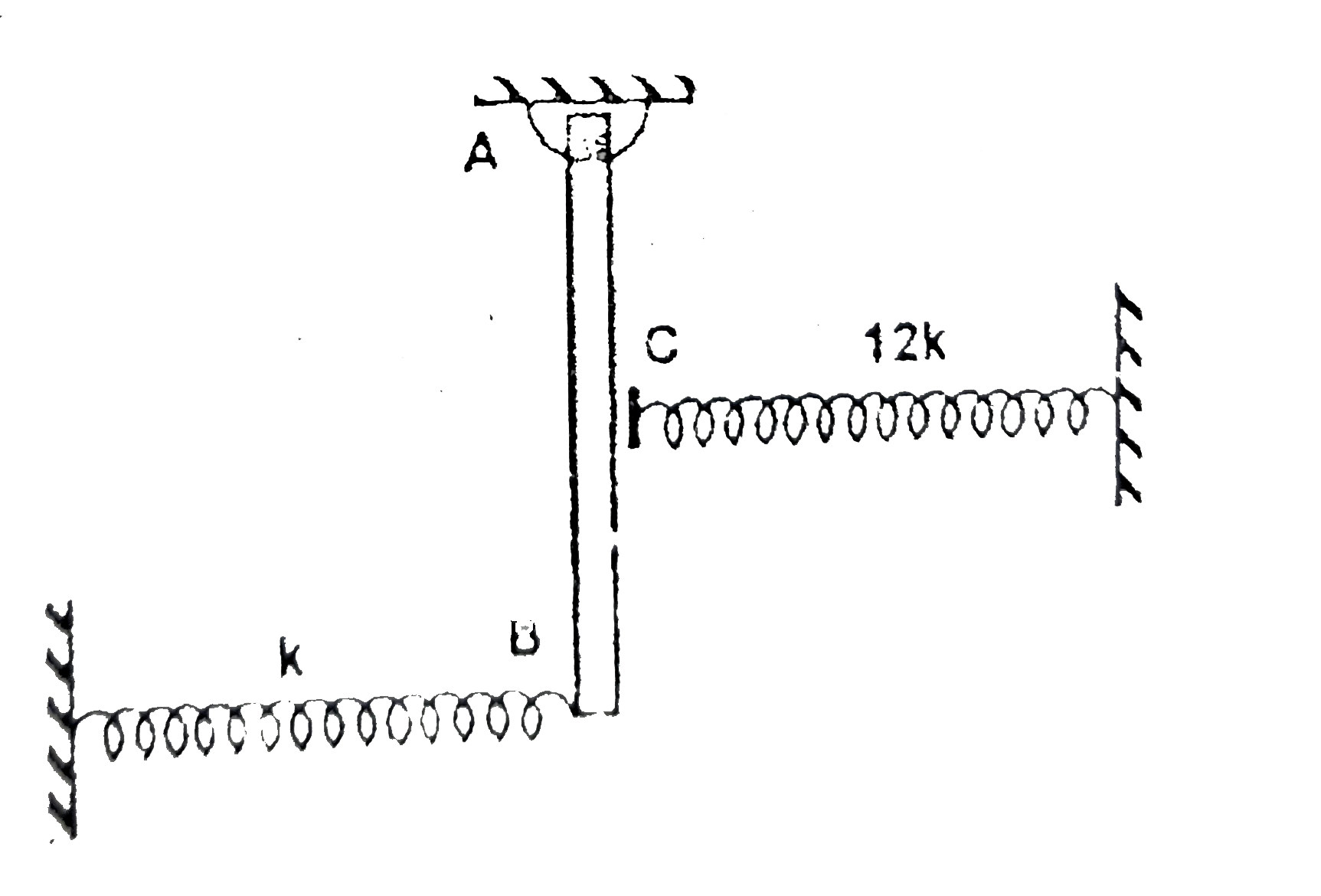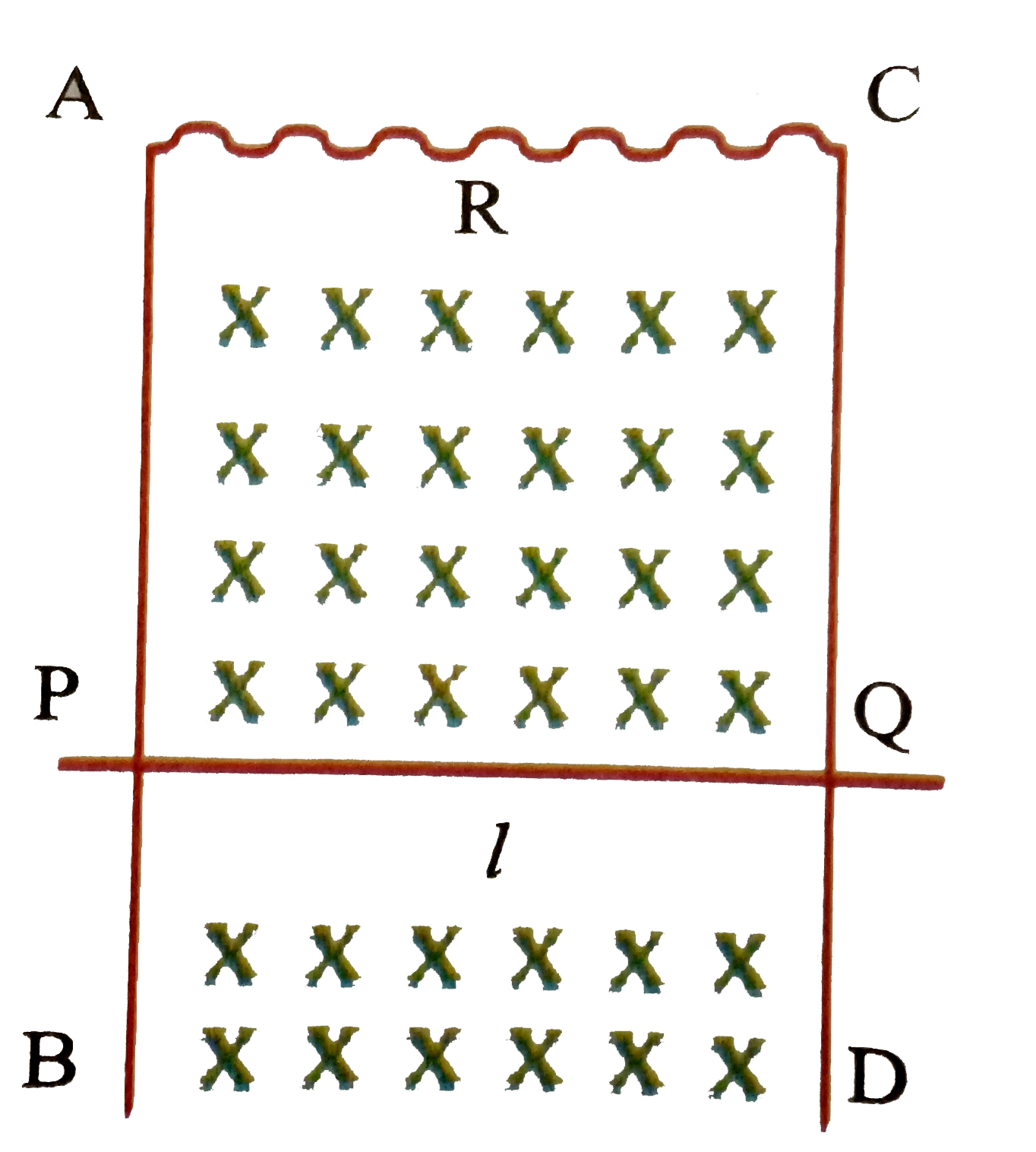Two light rods AB = a + b, CD = a - b are symmetrically lying on a horizontal plane. They are kept intact by two strings AC and BD. The perpendicular distance between the rods is 'a'. The length of AC is given by
a
b
√a2−b2
√a2+b2
To find the length of AC, we can follow these steps:
1. Identify the Configuration:
We have two light rods, AB and CD, with lengths AB=a+b and CD=a−b. The perpendicular distance between these rods is a.
2. Understand the Geometry:
The rods are symmetrically placed, and we need to find the length of the string AC, which connects point A on rod AB to point C on rod CD.
3. Label the Points:
Let's denote:
- Point A is at one end of rod AB.
- Point B is at the other end of rod AB.
- Point C is at one end of rod CD.
- Point D is at the other end of rod CD.
4. Determine the Coordinates:
- Assume point A is at the origin (0, 0).
- Since rod AB has a length of a+b, point B will be at (a+b,0).
- The perpendicular distance between the rods is a, so point C will be at (xC,a) where xC is the x-coordinate of point C.
- Since rod CD has a length of a−b, point D will be at (xC+(a−b),a).
5. Use the Pythagorean Theorem:
The length of AC can be calculated using the Pythagorean theorem. The distance AC can be calculated as:
AC=√(xC−0)2+(a−0)2
Simplifying this gives:
AC=√x2C+a2
6. Determine the Value of xC:
Since the rods are symmetrically placed, the x-coordinate of point C can be determined by the lengths of the rods. Given that the distance between the rods is a, we can find xC as:
xC=(a+b)−(a−b)2=b
7. Substitute xC into the Length Formula:
Now substituting xC=b into the length formula:
AC=√b2+a2
8. Final Answer:
Therefore, the length of AC is:
AC=√a2+b2
We have two light rods, AB and CD, with lengths AB=a+b and CD=a−b. The perpendicular distance between these rods is a.
The rods are symmetrically placed, and we need to find the length of the string AC, which connects point A on rod AB to point C on rod CD.
Let's denote:
- Point A is at one end of rod AB.
- Point B is at the other end of rod AB.
- Point C is at one end of rod CD.
- Point D is at the other end of rod CD.
- Assume point A is at the origin (0, 0).
- Since rod AB has a length of a+b, point B will be at (a+b,0).
- The perpendicular distance between the rods is a, so point C will be at (xC,a) where xC is the x-coordinate of point C.
- Since rod CD has a length of a−b, point D will be at (xC+(a−b),a).
The length of AC can be calculated using the Pythagorean theorem. The distance AC can be calculated as:
AC=√(xC−0)2+(a−0)2
Simplifying this gives:
AC=√x2C+a2
Since the rods are symmetrically placed, the x-coordinate of point C can be determined by the lengths of the rods. Given that the distance between the rods is a, we can find xC as:
xC=(a+b)−(a−b)2=b
Now substituting xC=b into the length formula:
AC=√b2+a2
Therefore, the length of AC is:
AC=√a2+b2
Similar Questions
Knowledge Check
Two light rods AB = a + b and CD = a -b symmetrically lying on a horizontal. There are kept intact by two strings AC and BD. The perpendicular distance between rods is a. The length of AC is given by
Aa. a2+b2Bb. a2−b2Cc. √a2−b2Dd. √a2+b2In a circle with centre O, AB and CD are two diameters perpendicular to each other. The length of chord AC is
A2ABB√2ABC12ABD1√2ABIn a circle with centre O, AB and CD are two diameters perpendicular to each other. The length of chord AC is
A2 ABB√2 ABC12ABD1√2 AB
A uniform rod of mass m=2kg and length l is kept on a smooth horizontal plane. If the ends A and B of the rod move with speeds v and 2v respectively perpendicular to the rod, find the:
a. angular velocity of CM of the rod.
b. Kinetic energy of the rod (in Joule).

View SolutionA uniform rod of mass M and length a lies on a smooth horizontal plane. A particle of mass m moving at a speed v perpendicular to the length of the rod strikes it at a distance a4 from the centre and stops after the collision. Find a. the velocity of the cente of the rod and b. the angular velocity of the rod abut its centre just after the collision.
View SolutionA rod of mass m and length L is kept on a horizontal smooth surface. The rod is hinged at its one end A. There are two springs, perpendicular to the rod, kept in the same horizontal plane. The spring of spring constant k is rigidly attached to the lower end of rod and spring of spring constant 12k just touches the rod at its midpoint C, as shown in the figure. If the rod is slightly displaced leftward and released then, the time period for small osciallation of the rod will be

View SolutionIn a parallelogram ABCD , AB= 6 cm , BC = 5 cm , and AC= 7 cm . Find the perpendicular distance between ¯¯¯¯¯¯ABand¯¯¯¯¯¯CD .
View SolutionTwo thick rods AB,CD are placed parallel to each other at a distance l. their ends are joined to a resistance R. A magnetic field of induction B is applied perpendicular to the plane contaning the rods. If the rods are vertical, the terminal uniform velocity of the rod PQ of mass m is given by

View Solution
